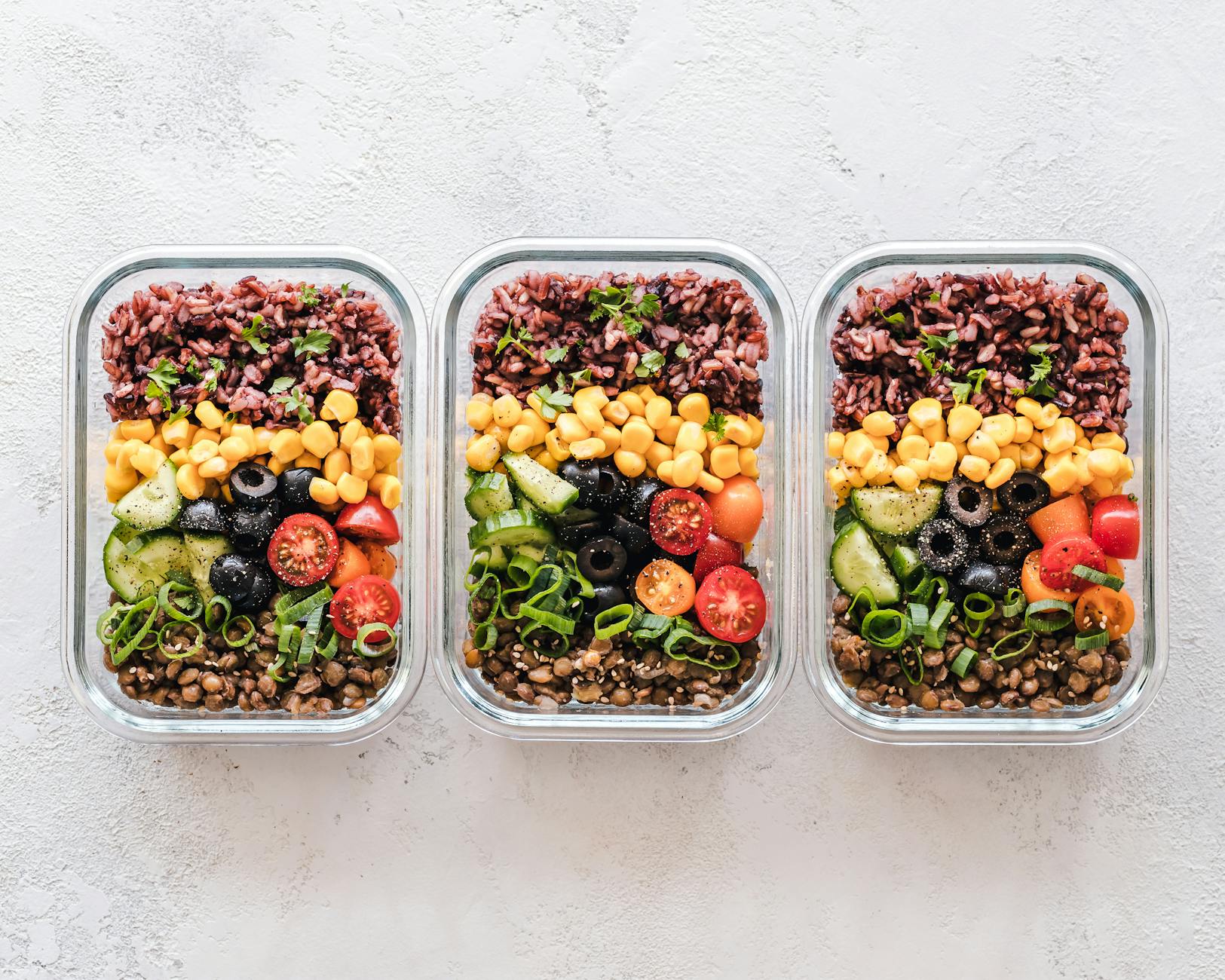Rethinking Everyday Eating Habits: Small Shifts That Make a Big Difference

Have you ever felt overwhelmed by the seemingly impossible task of transforming your diet? You’re not alone. In our fast-paced world, where nutrition advice seems to change daily, many of us find ourselves caught between knowing we should eat better and feeling paralyzed by the magnitude of change required. But here’s the liberating truth: you don’t need a complete dietary overhaul to see meaningful results. Research consistently shows that small, sustainable modifications are far more effective in the long term than dramatic diet revolutions.
Just as Adam Kahane’s concept of “radical engagement” suggests that meaningful systemic change happens at the “cracks” – those points of tension and opportunity – the same applies to your eating habits. The power lies in those small daily decisions: swapping white rice for brown, adding an extra vegetable to dinner, or simply pausing to taste your food truly. These seemingly minor shifts can cascade into profound changes for your energy levels, disease prevention, and overall well-being. In the following sections, we’ll explore how to identify your motivation for change, discover practical food swaps that make significant differences, build better habits through strategic approaches, practice mindful eating in our distracted world, engage radically with your food system, and navigate the inevitable challenges along the way. 🌱✨
Understanding the Power of Small Dietary Changes

Why incremental shifts outperform dramatic diet overhauls
When it comes to improving our eating habits, gradual changes consistently outperform radical transformations. According to research, a long-term commitment to incremental dietary shifts is significantly more effective than abrupt changes. The “small steps approach” has been validated through menu modeling studies, which demonstrate that progressive adjustments in food choices lead to substantial improvements in overall diet quality.
Unlike dramatic diet overhauls that often prove unsustainable, incremental changes allow individuals to adapt gradually, making them more likely to maintain these healthier habits over time. This approach acknowledges the complex social and psychological factors that influence our eating behaviors, working with—rather than against—our natural resistance to sudden change.
The connection between daily eating habits and chronic disease prevention
Our everyday food choices play a crucial role in preventing chronic diseases. The Institute of Medicine’s report “Improving America’s Diet and Health: From Recommendations to Action” emphasizes that dietary patterns, while just one determinant of health, are instrumental in reducing chronic disease risks and promoting public health.
The gap between recommended dietary intake and actual consumption among American adults is significant, highlighting the importance of making informed food choices daily. By implementing small but meaningful changes to our eating habits, we can gradually align our diets with established guidelines that are designed to prevent chronic conditions and enhance overall health outcomes.
How minor food choices impact long-term energy levels and well-being
The cumulative effect of small dietary decisions profoundly influences our energy levels and overall well-being. Research evaluating diet quality using the Healthy Eating Index-2005 found that making modest, practical adjustments in food selections can lead to remarkable improvements in nutritional intake.
In one study, transitional menus demonstrated progressive enhancements at each stage, with the average score for baseline menus increasing by over 50 points when compared to target menus that aligned with MyPyramid’s energy and nutrient goals. These improvements translate directly to better sustained energy throughout the day and enhanced overall wellness.
Understanding these connections provides a framework for making informed choices that support both immediate vitality and long-term health. The evidence clearly shows that we don’t need to completely overhaul our diets to see meaningful results—consistent small changes can lead to significant benefits.
With this understanding of how small dietary shifts can dramatically improve our health outcomes, let’s explore how to identify your motivation for making these changes. Finding your unique “why” will be essential for maintaining momentum as you implement these incremental improvements in your daily eating habits.
Identifying Your Motivation for Change

Now that we understand the power of small dietary changes, it’s essential to discover what personally drives you toward healthier eating habits. Sustainable changes begin with clear, personalized motivation that resonates with your unique circumstances and values.
Finding your intrinsic reasons for healthier eating
Intrinsic motivation—the drive that comes from within rather than external pressures—creates lasting change. According to health research, people make more sustainable dietary shifts when connected to personal wellness goals. Whether you’re managing a chronic condition like diabetes or kidney disease, seeking to improve your mental well-being, or simply aiming for longevity, identifying your core reasons matters.
Consider how dietary choices impact various aspects of your health:
- Physical health: Diverse whole foods reduce the risks of chronic diseases
- Mental well-being: Nutrition directly affects mood and cognitive function
- Environmental concerns: Your food choices impact planetary health
- Community connection: Supporting local food systems strengthens social bonds
Reflecting on which of these resonates most deeply with you provides the foundation for meaningful change.
Setting realistic, sustainable goals tailored to your lifestyle
Sustainability in eating habits isn’t just about environmental impact—it’s about creating patterns you can maintain long-term. When establishing your goals:
- Start with small, achievable targets rather than complete dietary overhauls
- Consider your regional food availability and seasonal options
- Account for your budget constraints and time limitations
- Focus on adding positive choices rather than just eliminating foods
For example, if you live in an area where certain produce is limited seasonally (like New England), adapt your expectations accordingly. If access is challenging, explore community resources like pop-up food stands that bring fresh produce to food deserts.
Recognizing eating patterns that no longer serve your health needs
Many of our eating habits develop unconsciously over time and may no longer align with our health requirements. Take time to evaluate:
- Current consumption patterns of foods like red meat (health experts recommend less than half an ounce daily)
- Reliance on processed foods with high environmental footprints
- Disconnection from food sources and seasonal eating cycles
- Food waste habits that impact both your budget and the environment
Through mindful reflection, you might discover that habits formed years ago—perhaps based on convenience or cultural norms—need recalibration to support your current health goals.
With these personal motivations identified and realistic goals established, you’ll be better prepared to implement practical food swaps that make a significant difference. In our next section, we’ll explore specific substitutions that can transform your diet without sacrificing satisfaction or convenience.
Practical Food Swaps That Make a Significant Difference

Now that we’ve identified your motivation for change, let’s explore specific actions you can take. Small dietary substitutions can lead to remarkable improvements in your nutritional intake without sacrificing enjoyment or satisfaction.
Simple grain upgrades: from refined to whole-grain options
One of the easiest yet most impactful changes you can make is switching from refined grains to whole grain alternatives. Instead of white bread, choose whole grain varieties that provide significantly more fiber and nutrients. Brown rice can replace white rice in virtually any dish, offering a nuttier flavor and better nutritional profile. When baking, consider using whole wheat flour in place of all-purpose flour—you’ll add fiber while maintaining texture in most recipes.
These simple grain upgrades align perfectly with the Australian Dietary Guidelines, which emphasize diverse food intake to maximize nutritional benefits. By planning your shopping around the five food groups and prioritizing wholegrains, you’re setting yourself up for improved digestive health and more sustained energy throughout the day.
Protein adjustments that balance nutrition and satisfaction
Protein choices significantly impact your overall dietary quality. Consider replacing higher-fat meats with leaner options like ground turkey or chicken instead of regular ground beef in dishes such as chili, tacos, or meatballs. Water-packed canned fish makes an excellent protein source that’s convenient and nutritious.
For vegetarian options, firm tofu can substitute for meat in many recipes while providing essential nutrients. When using eggs, egg whites or egg substitutes can replace whole eggs to reduce cholesterol and calories without compromising recipe functionality.
Even small adjustments like choosing low-fat cheese over full-fat varieties can make a difference. Many reduced-fat cheeses maintain excellent flavor while decreasing saturated fat intake. Similarly, plain Greek yogurt makes a tangy alternative to sour cream with significantly more protein and less fat.
Smarter beverage choices to reduce hidden calories and increase hydration
Beverages often contain hidden calories that can undermine even the most careful eating plans. Replacing soft drinks with fizzy water infused with fresh fruit can dramatically reduce sugar intake while maintaining the satisfying sensation of a carbonated drink.
When it comes to dairy beverages, switching from whole milk to skim or low-fat alternatives in cooking, baking, and drinking can significantly reduce overall fat consumption. This simple swap works wonderfully in soups, baked goods, and morning coffee without compromising taste.
For those who enjoy sweetened drinks, consider making your own flavored water using fresh herbs, citrus, or berries rather than purchasing pre-sweetened options. This approach not only reduces sugar and calorie intake but also increases overall hydration with minimal added ingredients.
With these practical food swaps now in your toolkit, we’ll next explore strategic approaches to building better habits that will help you maintain these positive changes over time. The transition from knowing what to change to actually implementing those changes consistently requires specific techniques that make healthy choices the path of least resistance.
Strategic Approaches to Building Better Habits

Now that we’ve explored practical food swaps that can make significant differences in your nutrition, let’s focus on creating sustainable systems that support these healthier choices long-term. Building better habits isn’t just about willpower—it’s about strategic approaches that make healthy eating the path of least resistance.
Creating a food environment that supports healthier choices
Your environment has a profound impact on your eating decisions. One effective strategy is implementing a structured approach to meal planning. Begin by assessing your family’s schedules, preferences, and nutritional needs. Consider whether weekly or monthly planning works better for your lifestyle, and determine if you prefer preparing meals in advance or closer to mealtime.
A well-stocked pantry and freezer form the foundation of a supportive food environment. Keep essentials from all five food groups readily available:
- Vegetables: Stock canned options and prioritize fresh or frozen for maximum nutritional value
- Fruits: Include both dried and fresh varieties
- Dairy: Maintain consistent access to your preferred options
- Proteins: Keep versatile options like canned beans and fish on hand
- Grains: Store a diverse selection for varied meals
Meal preparation techniques that save time while improving nutrition
Streamlining your approach to meal preparation can dramatically improve both efficiency and nutritional quality. Consider adopting a consistent schedule—planning meals on Fridays, shopping on Saturdays, and dedicating Sundays to meal prep. This rhythm eliminates the daily “what’s for dinner” dilemma that often leads to less healthy choices.
For effective meal prep:
- Chop vegetables in advance for easy incorporation into weekday meals
- Cook proteins ahead of time to simplify meal assembly
- Focus on recipes that generate strategic leftovers
- Combine familiar dishes with new ones to maintain interest
- Prioritize recipes that share common ingredients to minimize waste
Managing dining out without compromising health goals
While home preparation gives you maximum control over ingredients and portions, dining out remains an important part of social life. The key is maintaining balance. Before restaurant visits, review menus online to identify healthier options that align with your goals. Consider eating a small protein-rich snack beforehand to moderate hunger and make more mindful choices.
As we move forward to explore the art of mindful eating in our next section, remember that these strategic habit-building approaches create the infrastructure that makes mindfulness possible. By establishing supportive environments and efficient systems, you create space for the awareness and intention that characterize truly mindful eating practices.
The Art of Mindful Eating in a Distracted World

Now that we have explored strategic approaches to building better habits, let’s delve into how mindfulness can transform our relationship with food. In our fast-paced world filled with constant distractions, the simple act of eating has often become secondary to other activities, leading to disconnection from our food and our bodies’ signals.
Reconnecting with natural hunger and fullness cues
Mindful eating encourages us to return to a more intuitive relationship with food by paying attention to our body’s natural signals. This practice is rooted in the broader concept of mindfulness, which emphasizes intentional focus on our thoughts, emotions, and physical sensations in the present moment.
By tuning into your body’s hunger and fullness cues, you can begin to distinguish between physical hunger and emotional eating triggers. Research indicates that mindless eating, particularly when distracted, is strongly linked to anxiety and overeating. In contrast, developing awareness of your body’s signals can help you make more conscious choices about when to begin and end your meals, ultimately leading to improved psychological well-being and healthier dietary choices.
Techniques to slow down and fully experience your meals
One of the fundamental aspects of mindful eating involves engaging all your senses while eating:
- Observe your food before eating, noting colors, textures, and arrangement
- Smell your food and notice the different aromas
- Taste deliberately by taking smaller bites and chewing thoroughly
- Listen to the sounds your food makes as you prepare and consume it
- Feel the textures as you chew and swallow
Additional techniques include:
- Serving modest portions to prevent automatic overeating
- Eating slowly to enhance enjoyment and give your body time to register fullness
- Taking small pauses during meals to check in with your hunger level
- Expressing gratitude for your food and acknowledging its origins
These practices not only enhance food enjoyment but also help prevent overeating by giving your body the 20 minutes it typically needs to signal satisfaction to your brain.
Minimizing distractions to enhance food enjoyment and satisfaction
Our modern environment is filled with distractions that pull our attention away from the eating experience. Studies show that eating while distracted—whether by screens, work, or other activities—often leads to consuming more calories without increased satisfaction.
To create a more mindful eating environment:
- Designate a specific eating area free from electronic devices
- Turn off notifications during mealtimes
- Sit down at a table rather than eating on the go
- Focus solely on eating rather than multitasking
- Create a pleasant atmosphere that enhances your meal experience
The COVID-19 pandemic has highlighted the importance of these practices, as many people experienced disruptions in normal eating patterns and increased emotional eating during this challenging time. Incorporating mindful strategies can serve as valuable tools for enhancing your eating experience and supporting long-term health, even during stressful periods.
With this deeper understanding of mindful eating practices, we’ll next explore how to take your food consciousness a step further through radical engagement with your food system, connecting not just with the act of eating but with the broader context of how your food reaches your plate.
Radical Engagement with Your Food System
Now that we’ve explored mindful eating as a personal practice, let’s expand our perspective to understand how our individual food choices connect to larger systems and communities around us.
Understanding the Connection Between Personal Choices and Larger Food Systems
Your daily food decisions don’t exist in isolation—they’re part of a complex web of interactions spanning global food systems. Research from the Barilla Center for Food & Nutrition Foundation highlights five key determinants that influence our food choices:
- Food-internal factors: Sensory and perceptual features of food itself
- Food-external factors: Social and physical environments and available information
- Personal-state factors: Biological and psychological components, including habits
- Cognitive factors: Knowledge, attitudes, and preferences
- Sociocultural factors: Cultural norms, economic variables, and political influences
These interconnected factors demonstrate how personal eating habits contribute to pressing global challenges like hunger, obesity, and the environmental impact of food production. By recognizing these connections, you can make more informed choices that align with both personal health goals and broader sustainability concerns.
Community-Based Approaches to Supporting Healthier Eating Habits
Social context significantly influences our eating behaviors, even when we eat alone. Our interactions with family, peers, and community shape our food decisions in powerful ways. Research shows that:
- Social environments are frequently cited as significant influences on food choices
- Meal patterns and motivations vary across different social settings
- Community support can help overcome barriers to dietary changes
Community-based approaches leverage these social influences to create supportive environments for healthier eating. This might include community gardens, cooking classes, farmers markets, or food co-ops that make nutritious options more accessible. When communities collaborate to improve food access and education, individuals find it easier to maintain positive dietary changes.
Collaborating with Others to Create Sustainable Food Practices
Interdisciplinary collaboration is essential for addressing the complex challenges in our food system. The multifaceted nature of food choice requires input from diverse perspectives:
- Educational collaborations: Sharing knowledge about nutrition and sustainable food practices
- Environmental initiatives: Working together to reduce food waste and environmental impact
- Economic partnerships: Creating systems that make healthy food affordable across socioeconomic groups
- Policy advocacy: Supporting changes that promote healthier food environments
By participating in these collaborative efforts, you move beyond individual change to help create systemic solutions. Successful interventions combine education, environmental changes, and social support to foster lasting dietary behavior change.
With this foundation for engaging with your broader food system, we’ll next explore strategies for navigating challenges and maintaining momentum in your journey toward healthier eating habits, even when faced with obstacles.
Navigating Challenges and Maintaining Momentum

Now that we’ve explored radical engagement with your food system, let’s address the inevitable challenges that arise when making dietary changes and discover how to maintain momentum for lasting success.
Strategies for overcoming common dietary change obstacles
Time constraints often present the first major hurdle in adopting healthier eating habits. Rather than viewing meal preparation as overwhelming, dedicate just one hour on weekends for batch cooking. Embrace efficiency shortcuts like pre-chopped produce and quick cooking methods to make nutritious eating feasible even with a busy schedule.
The perception that healthy eating is expensive can quickly derail good intentions. Combat this by:
- Cooking at home more frequently
- Focusing on whole, affordable foods like grains
- Purchasing seasonal produce when it’s most cost-effective
- Planning meals to reduce waste and unnecessary spending
For those working long hours, exhaustion can lead to poor food choices. Break this cycle by implementing small, manageable changes rather than attempting a complete dietary overhaul all at once. Keep healthy snacks readily available to prevent unhealthy cravings when energy levels dip.
Building resilience when facing setbacks in your eating habits
Setbacks are an inevitable part of any lifestyle change. Developing resilience begins with identifying your barriers—the specific factors that have hindered your progress in the past. Take time to document these obstacles alongside potential solutions, creating a roadmap for navigating difficult situations.
Replace negative self-talk with patient, supportive inner dialogue. When you slip up, avoid harsh self-judgment that can undermine your motivation. Instead, view setbacks as learning opportunities and recommit to your goals.
Support systems prove invaluable when maintaining dietary changes. Enlist family members, friends, counselors, or healthcare professionals who can provide encouragement and accountability. Having someone to share both struggles and successes with significantly increases your chances of long-term success.
Creating sustainable patterns that evolve with your changing needs
Sustainability in dietary changes comes from gradual implementation rather than dramatic restrictions. Focus on the enjoyment of nutritious foods instead of feelings of deprivation. This positive relationship with food creates patterns you can maintain indefinitely.
When balancing social engagements with healthy choices:
- Practice moderation rather than complete avoidance
- Remain mindful of your choices when dining out
- Prepare for challenging situations by planning ahead
For sustainable change, it’s essential to understand your motivations and regularly visualize your health goals. Setting a specific start date for small, realistic steps—such as incorporating more vegetables or planning time-efficient meals—creates momentum and a sense of achievement.
As your lifestyle evolves, so should your eating habits. Regularly reassess your needs, adjusting your approach to accommodate changes in your schedule, stress levels, or health requirements. This flexibility ensures your healthy eating habits remain relevant and sustainable throughout life’s inevitable transitions.

A Journey of Small Steps Toward Lasting Change
Transforming your eating habits doesn’t require a complete dietary overhaul. As we’ve explored throughout this blog, the most sustainable approach involves making small, deliberate shifts that align with your motivations and lifestyle. Whether it’s swapping refined grains for whole grains, adding an extra serving of vegetables to your meals, or simply pausing to appreciate the nourishment your food provides, these incremental changes compound over time to create significant health benefits.
Remember that changing your relationship with food is a continuous process rather than a destination. Just as Adam Kahane describes “radical engagement” as an ongoing practice of connecting meaningfully with systems, your journey toward healthier eating habits requires perseverance, experimentation, and compassion for yourself. By viewing food as a source of nourishment and joy rather than categorizing it as “good” or “bad,” you can build a healthier relationship with eating that supports your well-being for years to come. Today, commit to one small shift in your eating habits—your future self will thank you for taking that first step.
